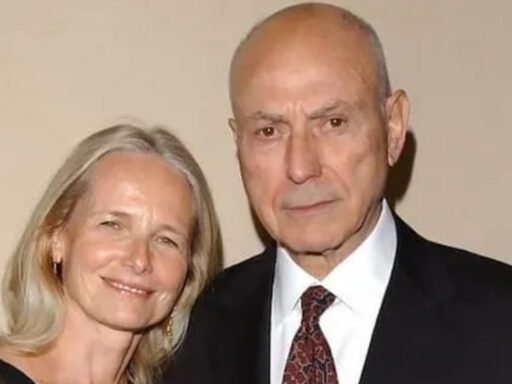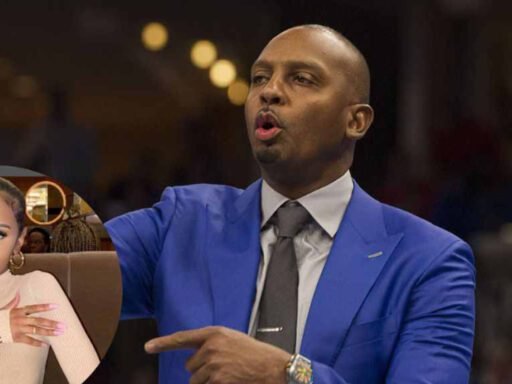In this article, we will pay tribute to the remarkable life and legacy of Hunter James Kelly, whose courageous battle with Krabbe disease inspired his father, former Buffalo Bills quarterback Jim Kelly, and countless others around the world. Despite his young age and the devastating effects of the disease, Hunter’s story captured the hearts of many, leading to the establishment of the Hunter’s Hope Foundation and raising awareness about Krabbe disease. Join us as we delve into the journey of Hunter James Kelly, a brave little boy who left an indelible mark on the world.
Early Life and Diagnosis
Hunter James Kelly was born on Valentine’s Day, February 14, 1997, a day that would forever hold a special significance for his family. At birth, Hunter appeared to be a healthy baby, weighing 7 pounds 14 ounces, and measuring 21 inches long. However, as he entered his second and third months of life, his parents, Jim, and Jill Kelly, noticed concerning changes in his behavior. Hunter became increasingly irritable and had trouble reaching developmental milestones.
Seeking answers, the Kellys turned to Hunter’s pediatrician, who initially attributed his symptoms to colic. However, as Hunter’s condition worsened, they sought a second opinion from a child neurologist. It was during this visit that the Kellys received devastating news—Hunter had been diagnosed with Krabbe disease, an inherited degenerative disorder of the nervous system. Doctors informed them that the disease hindered the development of the myelin sheath, a protective covering for the brain’s nerve fibers.
The Impact of Krabbe Disease
Krabbe disease, also known as Globoid Cell Leukodystrophy, is a rare and fatal genetic disorder. It occurs when individuals inherit a rare gene from both parents, leading to a deficiency in the enzyme necessary for myelin production. Without myelin, the nerve cells in the central and peripheral nervous systems cannot function properly, resulting in the deterioration of motor skills, mental development, and overall health.
Symptoms of Krabbe disease include irritability, movement problems, seizures, vomiting, slow mental development, deafness, and blindness. Unfortunately, there is currently no known cure for this devastating condition. Hunter’s diagnosis at such a young age meant that his life would be significantly impacted by the disease, and his prognosis was initially bleak.
Hunter’s Hope Foundation
In the face of this heartbreaking diagnosis, Jim and Jill Kelly refused to give in to despair. Instead, they channeled their love for Hunter into action, establishing the Hunter’s Hope Foundation in 1997. The foundation’s primary objective was to fund research into Krabbe disease and other leukodystrophies, as well as provide support and hope to affected families worldwide.
Thanks to the tireless efforts of the Kelly family and the generosity of countless supporters, the Hunter’s Hope Foundation has raised over $6 million to date. These funds have been crucial in advancing research and providing much-needed resources to families affected by Krabbe disease and similar conditions. The foundation’s impact extends far beyond financial contributions—it has become a beacon of hope for those facing the challenges of rare genetic disorders.
Hunter’s Inspiring Journey
Despite the devastating effects of Krabbe disease, Hunter’s spirit remained unyielding. Confined to a wheelchair and relying on a respirator and feeding tube, he faced each day with remarkable courage and resilience. Over time, Hunter made significant progress, defying the initial prognosis of rapid health decline. Through physical and occupational therapy, he developed the ability to lift his arms and head, communicating through a series of facial expressions.
Hunter’s story touched the lives of many, as he demonstrated a profound appreciation for the simplest joys in life. While he may not have spoken a word, his eyes spoke volumes, reflecting his unwavering determination. His parents marveled at his understanding, as Hunter listened attentively to stories read to him. Additionally, he displayed a surprising talent for bowling, using his limited mobility to aim and release the ball towards the pins.
Hunter’s Impact and Legacy
Jim Kelly, renowned for leading the Buffalo Bills to four consecutive AFC titles in the 1990s, often spoke of Hunter’s profound influence on his life. Retiring from football after the 1996 season, Jim found a new purpose in being Hunter’s father and champion. He recognized that Hunter’s journey was far more significant than any athletic achievement and celebrated his son’s ability to inspire others.
Hunter’s Hope Foundation has played a pivotal role in raising awareness about Krabbe disease and advocating for early detection through newborn screening. The Kellys’ relentless efforts led to New York state implementing a screening program for Krabbe disease, enabling timely intervention and potentially life-saving treatments for affected infants.
Hunter’s legacy lives on through the foundation’s ongoing work, which continues to support families affected by leukodystrophies and advance scientific research. The outpouring of support from individuals and celebrities alike demonstrates the profound impact one young boy had on the world, forever changing the course of a disease, and giving hope to countless families.






